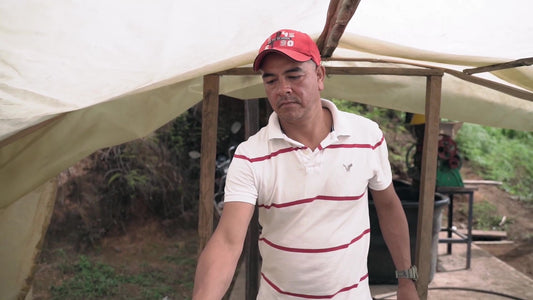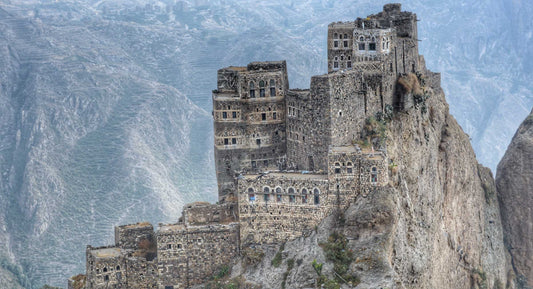Every single process along the coffee chain from farm to cup is essential, but there is something magical about how coffee roasting takes the green coffee seed that is hard as a rock, smells agricultural and has an unpleasant vegetal flavour, and through the application of heat and skill, transforms it into the most amazingly aromatic, flavoursome coffee bean that we love. The art of coffee roasting is central to the quality of your morning coffee, yet not all roasts or roasters are created equal. Specialty coffee roasters distinguish themselves through their approach to coffee, from the quality of the beans they source, to how they treat their suppliers, to the operational set up and scale, all of these ultimately determined by what experience they want their customer to have. This approach results in delivering a superior product with nuanced flavours that appeal to consumers who are not just looking for a quick caffeine fix to start their day. But what exactly makes a coffee roaster "specialty," and how does this differ from standard coffee roasting practices?
How Does a Specialty Coffee Roaster Differ from a Standard Coffee Roaster?
The main difference lies in the selection of beans and the attention to the roasting process. Basically, the beans have to be of a high enough quality to be classed as specialty beans according to specific rules set out by the Specialty Coffee Association. If the beans aren’t of a high enough quality, even the best roaster in the world would not be able to turn them into specialty coffee. Specialty coffee roasters source high-quality, single-origin beans with specific attention to sustainable and ethical farming practices. Some roasters have direct trade with producers in countries that they want to work with and will buy up all or large parts of the harvest from specific farms. This means that they have more traceability and can build direct enduring partnerships with the producers, often offering additional benefits such as educational or social impact programmes alongside the coffee sourcing relationship. For most specialty coffee roasters, they will work with specialty coffee importers who manage the direct relationships with the coffee farmers, often providing similar educational and social programming as part of their corporate responsibility ethos. Specialty coffee roasters may have multiple importers that they work with, particularly if they are making blends, and by working with good importers who can provide excellent coffee and align with their values, this is often a good approach for specialty coffee roasters as it gives them access to greater selection and more choices for their customers. In contrast, standard roasters may focus more on volume and cost efficiency, potentially sacrificing bean quality and roast precision. They often source through what is called the commodity coffee market.
What is the commodity coffee market?
The commodity coffee market refers to the trading of coffee as a bulk good, where coffee is primarily valued as a commercial agricultural product with its price determined on global commodity exchanges (the Intercontinental Exchange (ICE) in New York for arabica coffee and the London International Financial Futures and Options Exchange (LIFFE) for robusta coffee). This market is dominated by standard coffee beans, mainly the robusta and lower grade arabica varieties, which are typically used in mass-market coffee products including instant coffees and supermarket brands.
The commodity coffee market can have a profound impact on coffee farmers, particularly in developing countries where coffee represents a critical export commodity. Price fluctuations can affect their income and economic stability.
In contrast to commodity coffee, specialty coffee is traded based on quality and distinct flavour profiles, often linked to specific regions or microclimates, and is usually sold at a premium. Specialty coffees are graded and priced individually, often through direct trade relationships between farmers and roasters or buyers, which can bypass the traditional commodity market channels.
Overall, the commodity coffee market plays a crucial role in the global coffee industry, influencing everything from the price consumers pay to the economic well-being of the farmers who grow coffee. However, it also faces criticism for prioritizing volume over quality and for the economic pressures it places on coffee farmers.

What Techniques Do Specialty Coffee Roasters Use to Enhance Flavour?
Specialty roasters employ various techniques to maximize flavour:
- Precise Control of Roast Profiles: By adjusting the temperature and timing of the roast, roasters can develop desired flavour profiles tailored to the bean’s origin and variety. Specific coffees react different to heat based on their individual chemical makeup, the amount of moisture in the beans, and other environmental factors like the temperature of the roastery. If the roaster sees the coffee is reacting slightly differently to usual (maybe it’s a very hot or cold day), they can make micro-adjustments either adding heat or reducing it earlier or later.
- Small Batch Roasting: This allows for greater control over the roast, ensuring consistency and quality. Throughout the roasting process, the roaster will check how the coffee is developing, both visually and aromatically.
- Cupping Sessions: Regular tasting sessions help roasters refine the roast profiles and ensure that each batch meets the desired flavour standards. This is essentially the roaster’s quality control process and happens before the roaster decides to purchase the coffee with small samples, as they design the roast for that specific coffee (multiple times as there’s a lot of trial and error to find the perfect roast profile, and then after batches are roasted for customers to ensure that each roast achieves the quality that they want.
In contrast, normal roasters who are operating at scale cannot take the same approach, which introduces a problem of consistency. This is usually managed by roasting to darker roast levels that result in uniformity of the end product but a lot of those unique flavour potentials in the beans are lost (less of an issue for commodity coffee). If you’ve ever picked up a bag of coffee in a supermarket and seen those strength or intensity levels, they are referring to the roast level or how dark the coffee is roasted (it’s not to do with amount of caffeine). So, a strength four out of five is going to be dark roast and is not going to have the subtle, aromatic flavours that you might be looking for in your cup.
What Criteria Must Roasters Meet to Be Classified as Specialty?
To be classified as a specialty, roasters must adhere to standards set by bodies such as the Specialty Coffee Association (SCA). These criteria often include the bean quality, roast method, flavour profiles, and even the ethical sourcing of the beans. Whilst, roasters can become certified by the SCA, most specialty coffee roasters are self-trained and have learned from others in the industry and through a lot of trial and error.
What is a Coffee Roaster?
A coffee roaster is both a machine and a term used to describe the person who operates it. The machine is used to heat the coffee beans, causing chemical and physical changes that transform green coffee beans into aromatic brown beans ready for brewing.

Why is Coffee Roasting Necessary?
If you’ve ever seen a coffee bean before it’s roasted you will see, smell and (if you’re a bit quirky) taste that there’s no way that in this state it would make a palatable drink. Unroasted beans are grassy, sour and hard as rocks, lacking the characteristics one typically associates with coffee. Roasting is essential as it develops the complex flavours and aromas locked within green coffee beans.
What Tasks Does a Coffee Roaster Do?
A coffee roaster manages the roasting process, which includes:
- Selecting and Mixing Beans (if roasting a blend): Choosing which beans to roast and how to blend them. Usually, the blending process will take place after the single origins have been roasted individually as each origin will perform differently in the roaster.
- Roasting: Adjusting the roasting machine settings to achieve desired flavours. This includes deciding the original temperature that the beans will enter the roaster, how much heat to apply at each stage of the roast, how much airflow to allow through the roaster, constant monitoring of the roast, and finally deciding when the coffee has reached it’s intended development and removing it from the roaster.
- Cooling and Packaging: Ensuring the beans are quickly cooled after roasting to stop the heat that has built up in the beans from continuing to heat the coffee, then packaging them for freshness.
What Happens During Coffee Roasting?
During roasting, coffee beans undergo several stages:
- Drying: Raw coffee contains about 10% of its weight in water, which needs to be evaporated off to allow the coffee to be turned into a roasted coffee bean. Whilst moisture is being removed, the coffee barely changes at this stage in look or smell.
- Yellowing: Once the moisture has evaporated off, the coffee beans begin to expand losing the thin, papery outer layer called chaff, and begin to change to a yellow colour and emit a grassy smell.
- First Crack: As the coffee continues to brown, the beans begin to emit aromas recognisable as coffee. The beans grow in size to nearly double and inside the bean, gases and water vapour build up and cannot escape. Eventually this pressure gets too much, and the gases are forced out of the bean, breaking the bean open and making a cracking sound as the beans expand and sugars caramelize.
- Development: After the first crack, the roaster develops the desired flavour profile through deciding how much heat and airflow to use.
- Second Crack: If the roaster is aiming for a darker roast (e.g. French roast), they might develop the beans into second crack. A second, lighter crack is heard at this point and to go any further would result in a very dark, acrid flavour.
- Cooling: Beans are cooled rapidly by removing them from the roaster to stop the roasting process.
What is chemically happening in the coffee bean during the roasting process?
During the coffee roasting process, numerous chemical reactions occur that transform the physical and flavour properties of the green coffee beans:
Moisture Loss: Initially, the green coffee beans lose moisture and undergo a drying phase. This reduction in moisture is critical for allowing further chemical transformations.
Maillard Reaction: One of the most significant reactions during coffee roasting is the Maillard reaction, a chemical reaction between amino acids and reducing sugars that gives browned foods their distinctive flavours. This reaction contributes to the development of hundreds of different flavour compounds in the coffee, resulting in richer and more complex profiles.
Caramelization: As temperatures increase, sugars in the coffee beans start to caramelize. This caramelization process breaks down the sugars, producing sweet and bitter flavour compounds and further enhancing the complexity of the coffee’s taste. By the end of the first crack, the bean will have almost no sugar left and so the longer it is developed, the increased bitterness that will be in the coffee (think burning caramel in a pan).
Strecker Degradation: This is a derivative of the Maillard reaction, where amino acids are broken down into simpler molecules that are responsible for introducing various flavour notes, such as nutty and fruity.
Development of Acids: Various types of acids (e.g., citric, acetic, lactic) are either formed or broken-down during roasting. The balance of these acids greatly affects the acidity level of the coffee, which is a significant component of the overall flavour profile.
Decomposition of Chlorogenic Acids: Chlorogenic acids break down into quinic and caffeic acids. This breakdown is critical because chlorogenic acids can lend a bitter flavour to coffee; their decomposition reduces bitterness and enhances other flavours.
Pyrolysis: This is the thermal decomposition of organic materials in the absence of oxygen. In coffee roasting, pyrolysis leads to the breakdown of larger molecules into smaller ones, contributing to the flavour, aroma, and colour of the coffee.
Development of Volatile Compounds: Many volatile compounds are produced or become pronounced during the roasting process. These volatiles are responsible for the aroma of the coffee.
Physical Changes: Alongside chemical reactions, physical changes also occur, such as bean expansion, colour change from green to brown, and the development of a porous structure. The beans lose density and gain volume, affecting the texture and the way the coffee feels in the mouth.
First and Second Cracks: During roasting, coffee beans undergo two notable physical changes known as the "first crack" and "second crack." The first crack occurs as the beans expand and moisture escapes violently, which sounds like popcorn popping. The second crack, which occurs at higher temperatures, is more subtle and signals a darker roast, leading to an oilier appearance as more cellular structures within the bean break down.
Each of these steps is carefully controlled by adjusting the temperature and timing of the roast to achieve the desired profile and quality. The art and science of roasting are in manipulating these reactions to produce a consistent and delicious product.
What Types of Coffee Roasters Are Used in the Industry?
There are several types of roasters, but the most common are:
- Drum Roasters: Beans are roasted in a rotating drum heated by gas or electricity. The roaster can control the heat being applied to the drum and the amount of airflow in the roaster.
- Fluid Bed Roasters: Hot air is used to lift and roast the beans, allowing for quick and even roasting. Popcorn makers are fluid bed roasters, and many hobby coffee roasters start out using one to roast coffee.
How Do Different Roasting Machines Impact the Quality of Coffee?
The choice of roasting machine affects the consistency, flavour, and quality control. It all comes down to heat transfer, which can either be done through conduction (the transfer of heat between two directly touching objects), convection (the transfer of heat through a gas or liquid) and radiation (the release of energy via electromagnetic radiation because of vibrational and rotational movement of molecules and atoms). Convection and Conduction both play a role in coffee roasting and the quality of the roaster comes down to how its materials and design impacts these two processes. For instance, some metals are better at storing heat than others, which will impact the amount of conductive heat potential that material has.
What Innovations in Coffee Roasting Have Emerged Recently?
Recent innovations include:
- Automation in Roasting: Advanced software that helps roasters ensure each batch meets specific standards. Once a roaster has designed their perfect roast, programmes can run the roast based on the adjustments that the roaster wants to happen at which points. Most specialty roasters will also monitor the data just in case, but it does come in handy when multitasking!
- Eco-Friendly Roasting Technology: Innovations that reduce the environmental impact of roasting. This includes the fuel types that are being used, to energy capture and recycling, to roasteries installing renewable energy to power their machinery.
- Precision Roasting Tools: New technologies that allow for more precise control of heat and timing. Inside the roaster there are sensors that measure temperature, airflow and other factors that often link directly to the roaster’s computer so that they can carefully monitor what is going on inside the roaster.
What is a Coffee Roastery?
A coffee roastery is a facility where coffee roasting occurs. It is often also a space for innovation and education, where roasters experiment with different roasting techniques and host events to engage with the community.
What Services and Products are Typically Offered at a Coffee Roastery?
Coffee roasteries typically offer:
- Roasted Coffee Beans: Both single-origin and blends for customers and businesses.
- Brewing Equipment: Selling coffee making equipment that they recommend for customers to make coffee, either at home or in a commercial location.
- Coffee Classes and Workshops: Education on brewing techniques and coffee knowledge. Roasters are also great sources of guidance online for how to brew their products at home.
How Do Coffee Roasteries Source Their Beans?
Sourcing involves selecting coffee beans from farmers or suppliers. Many specialty roasteries practice direct trade, buying straight from the growers to ensure quality and sustainability. They also can use specialty coffee importers who have direct links with producers from many different origins.

What Role Does a Coffee Roastery Play in the Local Community?
Roasteries often serve as community hubs, offering not just coffee but also hosting events, art exhibitions, and more, fostering a local coffee culture. They often also have small cafes onsite where customers can try the coffee where it is produced. They often partner with other local businesses including cafes, restaurants, hotels and corporate offices to provide them with amazing coffee that is roasted locally.
What is a Micro-Roastery?
A micro-roastery operates on a small scale, often focusing on artisanal or craft roasting methods. They typically roast small batches, allowing for meticulous control over the roast profile of each batch. They usually use smaller roasters ranging in size from 1kg up to 5kg for each batch.
Which Roast of Coffee is Best?
The "best" roast depends on personal preference and the brewing method used and is hugely subjective. Many specialty coffee drinkers prefer light roasts as they highlight the coffees complexity and acidity, but many prefer medium roasts for their balance, and dark roasts also work very for their boldness and richness, particularly in espresso.
How Do Different Roasts Affect the Flavour of Coffee?
Light roasts preserve more of the bean's original flavour like fruitiness or floral notes, medium roasts enhance body and sweetness, and dark roasts develop richer, bolder flavours often with a chocolaty quality. Individual coffees will be better suited to a different style of roast. As important will be the brew method that is used for the end cup. For instance, pour overs are great when using light roasts to really accentuate the distinct flavour of the coffee whereas for espresso drinkers a medium or darker roast may be better for body and balance. Espresso typically uses darker roasts to emphasize richness and body, whereas filter coffee may use light to medium roasts to highlight acidity and aroma.
What are the Health Implications of Different Coffee Roasts?
Studies suggest that darker roasts may reduce the acidity of coffee, which can be better for those sensitive to stomach acid, whereas lighter roasts retain more antioxidants.
What are the Best Coffee Beans for Rich Coffee?
Sometimes people use the words rich, bold and strong to describe coffee but in specialty coffee these words can get a bit confusing as it’s not clear what they refer to exactly. We recommend using aroma, body, taste, sweetness, and acidity to describe coffee as it’s a bit more specific. Beans often described as rich flavours include those from Brazil, Sumatra, or Ethiopia, depending on the desired flavour profile, whether chocolatey, earthy, or fruity.
How Does the Origin of the Beans Affect the Richness of the Coffee?
The origin influences the bean's inherent qualities, such as acidity, body, and flavour notes, which are developed and highlighted through roasting.
What Processing Methods Enhance the Richness of Coffee Beans?
Methods like wet (washed) processing can enhance clarity and acidity, while dry (natural) processing tends to increase body and sweetness, contributing to a richer flavour profile.
What are the Different Types of Coffee Roast?
- Light Roasts: Generally stopped right after the first crack, these roasts preserve the bean's original flavours.
- Medium Roasts: Stopped before the second crack, these roasts balance natural flavours with those developed during roasting.
- Dark Roasts: Extended beyond the second crack, these roasts are rich and bold, with less of the original bean's flavours.
How Should Different Roasts Be Used in Various Coffee Preparations?
Our philosophy is that you do you, in the sense that if you like something keep doing it and live your best life. We’re not going to tell you that you can only use a light roast for a pour over. That said, if you want some recommendations on how many other specialty coffee drinkers prepare different roasts, here is a good rule of thumb:
- Espresso: Often uses darker roasts to produce a rich, creamy body.
- Pour-over: Best with medium to light roasts to enjoy the complexity and acidity.
- French Press: Suitable for medium to dark roasts to emphasize body and richness.

What is the Trend in Consumer Preference Regarding Coffee Roasts?
Recent trends show a growing preference for lighter roasts, particularly among specialty coffee drinkers, who appreciate the nuanced flavours typical of these roasts. However, traditional coffee cultures may still favour darker roasts for their robust taste and fuller body.
Is Specialty Coffee Expensive?
Specialty coffee is generally more expensive than commercial coffee due to its high quality, ethical sourcing, smaller volumes and the labour-intensive processes involved in its production. But it’s not quite as simple as that. Certainly comparing a bag of coffee bought in the supermarket with one bought from a specialty coffee roaster, you will notice a price difference, but the price of a cup of coffee bought from an independent specialty café compared with a high street chain, the difference is likely to be less noticeable (let’s support our independent high street businesses!). Ultimately, you’re not really comparing like for like in terms of the product. The best way to check this is to buy a bag of coffee from the supermarket and a bag of specialty coffee, brew both and do your own taste test to see if you notice the difference. In terms of price, only you will know if the difference in quality justifies the difference in price.
What Factors Contribute to the Cost of Specialty Coffee?
Factors include:
- High-Quality Beans: Often more expensive due to their rarity and the labour-intensive methods used to cultivate them. Most specialty coffee is hand picked with only the ripe cherries taken, whereas commodity coffee often uses large machinery to strip the cherries from the trees.
- Sustainable and Ethical Practices: Fair wages and environmentally friendly practices often increase costs. Specialty coffee is usually more traceable and transparent than normal coffee with those in the supply chain working hard to ensure that coffee chains are sustainable for all into the future. One of the major challenges faced by the coffee industry is the struggle to get the next generation of farmers to go into coffee growing and take over the farms from their parents as low wages and high risks (harvest failure, price fluctuations etc) compared to other sectors is a significant detraction.
- Artisanal Roasting: Small batch roasting requires more skill and time. Whereas commercial roasters can use large industrial machines to roast huge volumes of coffee quickly into very dark roasted, standardised coffee, specialty coffee roasters operating smaller machines and roasting smaller batch sizes to maintain quality are at a disadvantage commercially.
Who are the Owners of Coffee Roastery?
Owners of coffee roasteries often come from diverse backgrounds but share a passion for coffee and a commitment to quality. Many are former baristas, coffee enthusiasts, or entrepreneurs drawn to the craft of coffee. Their backgrounds can vary widely from business professionals to lifelong coffee aficionados, all brought together by a passion for quality coffee and sustainable business practices.
Owners play a crucial role in setting the vision and values of the roastery, from the focus on quality and craftsmanship to sustainability and community engagement. Many roastery owners have transformed their passion for coffee into successful businesses, becoming influential figures in the coffee industry and their communities.




